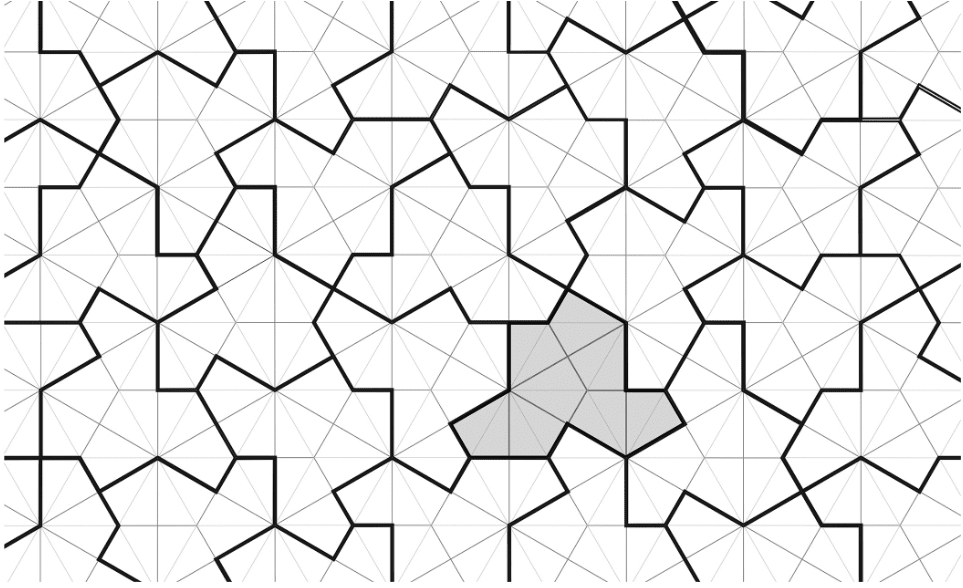Einstein has done it again. No, not that one: this time, the “einstein” that’s changed the world of math and physics is a tiny, skew-whiff polygon that’s been dubbed “the hat”.
There’s no relation to the famous physicist: in this case, “einstein” comes from the German “ein Stein”, meaning “one stone”, and it’s a pretty apt name for the special little shape. That’s because “the hat” can do something no other known shape can: it tesselates with itself in such a way that it can cover an infinite surface without ever creating a repeating pattern.

It’s a discovery some 50 years in the making. The most famous aperiodic tiling – that is, a tiling that never repeats itself – was created by Roger Penrose back in 1974, but it required two separate tiles to work. Ever since then, though, mathematicians have been wondering: could the same be possible using only one tile?
Now, thanks to nonprofessional mathematician David Smith, along with a team of academic researchers hailing from across the UK and US, the answer has been found.
“Everybody is astonished and is delighted, both,” Marjorie Senechal, Professor Emerita in Mathematics and History of Science and Technology at Smith College, who was not involved with the discovery, told Science News. “It wasn’t even clear that such a thing could exist.”
Even knowing that it does, the solution has turned out to be disarmingly simple. Before Smith came to him and his colleagues with the new shape, “I would’ve drawn some crazy, squiggly, nasty thing” if asked to suggest a potential einstein, Chaim Goodman-Strauss, Professor of Mathematics at the University of Arkansas and co-author of a new preprint on the discovery, told Science News.

Although the paper has yet to be peer-reviewed, experts believe it’s likely to hold up to scrutiny. Finding the tile, and proving its aperiodicity, required the use of both powerful computers and human creativity, Goodman-Strauss told New Scientist: “You’re literally looking for like a one in a million thing. You filter out the 999,999 of the boring ones, then you’ve got something that’s weird, and then that’s worth further exploration,” he explained.
“And then by hand you start examining them and try to understand them, and start to pull out the structure,” he added. “That’s where a computer would be worthless as a human had to be involved in constructing a proof that a human could understand.”
That proof, in its most basic form, consisted of two steps. The first hint that the “hats” were something special was their tendency to arrange themselves into larger clusters, or “metatiles”. These, in turn, arrange themselves into even larger “supertiles”, and so on – a behavior that is common in non-periodic tilings, and was a major clue that the shape might be a potential einstein.
However, proving its aperiodicity required a slightly different technique. For this, the team stretched and morphed the hat to create a family of tiles along a continuum – all with the same repeating pattern, but at various stages between two extreme shapes. By considering the situation at these extremes, the researchers were able to show that the tiling created by the hat was indeed aperiodic.
While the new shape may have geometers excited, the implications of discovering a true einstein extend further than the local university’s pure math department. Aperiodic tilings are important in the development of quasicrystals, which in turn have found applications in everything from Kleenexes to real-life Terminator-style robots.
For some, though, the potential uses of the admittedly cute new shape start closer to home.
“You’re going to see people putting these in a bathroom because it’s just cool,” said Colin Adams, Professor of Mathematics at Williams College, who was not involved in the research.
“I would put it in my bathroom if I were tiling it right now.”
The paper can be found on the arXiv preprint server.
Source Link: This Brand New "Einstein" Tile Can Do Something No Other Shape Can Do